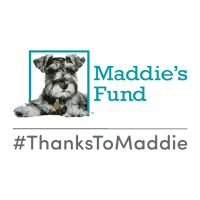Dogs are very social creatures and some may get worried or anxious when separated from their “pack.” It’s possible that your dog will have a physical or behavioral response when he is separated from you, possibly resulting in unwanted or destructive behavior. Dogs may show anxiety by whining, barking, destroying objects, escaping, panting, or drooling. Many dogs have minor separation anxiety, which can be alleviated by the tips below. If the problem persists, or your dog’s condition gets worse, please contact us for additional tips or suggestions!
How do I know it is separation anxiety?
There are several different behaviors that may be from separation anxiety. If you say yes to most of the following questions, there may be a possibility of separation anxiety.
- When left alone, does your dog scratch or chew at the windows or doors?
- Once you have arrived home, does your dog follow you throughout the house?
- Is he overly excited?
- When you are planning to leave, does your dog become nervous when you put shoes on, pick up keys, etc.?
- Does your dog try escaping the crate he may be in?
Recommendations:
- Don’t make a big deal when you leave for the day or when you return. This way, you are communicating to your dog that the time apart is no big deal. It’s just business as usual! Depending on the severity of the dog anxiety, you may need to practice the rule for five minutes or up to an hour before you leave and when you get back.
- You don’t need to say Goodbye to your dog before you leave! He won’t mind. If necessary, take a moment to share affection and tell your dog that you will miss him way before you actually leave. Keep in mind that this display is for you, not your dog! Your dog won’t have his feelings hurt if you didn’t say goodbye.
- After your dog settles down when you arrive home, calmly greet him. The more excitement in your voice, the more excited your dog will become. Once again, you want to communicate that it is no big deal to be away – being calm accomplishes this.
- Teaching your dog basic commands, such as sit and stay, can help build your dog’s confidence and provide bonding time.
- If picking up your keys or putting shoes on seems to be what starts to get your dog upset, start doing this more often when you’re not leaving. You can also try picking up an object (like keys or putting shoes on) and then giving a treat when he starts to not pay much attention.
- Make sure your dog is getting enough exercise! Giving vigorous activity as needed can help take some of that extra energy out. Try to take your dog out for an extended walk or run right before you leave to make sure he is tired and worn out.
- Treat dispensing toys can help keep your dog busy while you’re gone. Be sure to use appropriate toys, like KONGS. Remove these special toys as soon as you return home so that your dog only has access to them and the high-value foods inside when he’s by himself. Do not give your dog these higher value toys if he resource guards.
- Start out small. Leave your dog alone for five minutes, then extend the time to twenty minutes, then an hour. Continue to increase the time you spend away until you can leave for a full eight hours without any more dog problems!
- Make sure you do not punish your dog as this will not help the issue. If you punish your dog when you get home, he will not understand what he had done. Focus on positive reinforcement.






